Trip Logs
The Northwest Passage: From Greenland to the Bering Sea Trip Log: August 25–September 18, 2023

August 26, 2023 | Kangerlussuaq, Greenland
After arriving in New York City yesterday, we rose early for breakfast before weaving our way through traffic to the airport, where we were whisked through security and to our gate. Our charter flight was a smooth one and we descended for our landing in Kangerlussuaq a little after 4 p.m. local time. From there, we were transferred to the head of the bay, where brisk winds made it feel considerably chillier.
Assisted by our crew and staff, we boarded ‘L’Austral’ on choppy seas. Once aboard, a reception awaited in the grand salon, including flutes of Champagne, mini-sandwiches and fruit. With our luggage loaded and briefings complete, we settled in for our first night aboard this Greenland ship of wonder.

August 27, 2023 | Eternity Fjord
Today brought a change in our sailing plan, as weather delayed our original scheduled visit to Sisimiut. Instead, we briefly headed south, finding shelter in Greenland’s famed Eternity Fjord (Evighed Fjord). After sailing down one of the arms of this lengthy waterway, we anchored near the base of one of its glaciers.
An afternoon zodiac cruise took passengers around the split feet of the massive ice. On the one side was a “hanging” glacier that didn’t quite reach the sea. On the other, smaller side, the ice’s brilliant blue hue showed where it had recently calved.
Passing around the rocky shore, a flock of black-backed gull (the largest in the world) suddenly took flight. Above them, near a small waterfall, an observant passenger spotted a tiny patch of color. Our flora specialist, Nellie Nilsen, identified them as river beauties — Greenland's national flower — noting wedding bouquets here frequently include its blossoms.
Back aboard ‘L'Austral,’ there was time to rest before the night’s recap, during which we viewed a close-up of the River Beauty for added context. We then listened intently as a member of our Expedition Crew shared what to do, and not do, if a polar bear takes notice of us in these wild, pristine and remote surroundings.

August 28, 2023 | Nipisat Island
After a night at sea, we turned inland toward uninhabited Aasivissuit-Nipisat — an Inuit hunting ground between ice and sea, located inside the Arctic Circle in central-western Greenland. A UNESCO World Heritage Site with 4,200 years of human history, the cultural riches of this landscape stretch back to the early pre-Dorset and Saqqaq people.
The bear guards arose early this morning, scouting a landing place and securing the perimeter. After setting out by Zodiac, we disembarked on a narrow gravel beach, well-protected from the rough water. A path leading up over rocks and grassy soil brought us to a pair of beautiful lakes, framed on either side by gentle peaks. Here, across a boggy section of soil and a small stream, archaeologist Margaret Bertulli identified historic structures, including the remains of an 18th-century whaling station and a Thule house with an entrance passage.
With everyone back aboard, our photo enrichment coach, Michelle Valberg, offered an insightful workshop to round out the morning’s activities. Then, in the afternoon, Inuit culture expert Leslie Qammaniq discussed the Inuit’s traditional hunting and gathering techniques, as well as their diets.
This evening, we joined Captain Fabien Roché — or “Captain Fab” — for a cocktail reception and gala dinner, marking an auspicious start to our journey through the Northwest Passage.

August 29, 2023 | Ilulissat
llulisat — a coastal town in western Greenland — was for many years a remote, modest trading post. With the emergence of the modern maritime trade, it became a center for fishing, particularly halibut. Its most notable feature — the miles-long Icefjord — pumps hundreds of icebergs into the North Atlantic every year. Less a navigational obstacle than a scenic asset nowadays, the flow of ice has only accelerated in recent years.
Arriving early at the UNESCO World Heritage Site, we struck out from the boardwalk, seeing the Ilulissat Icefjord Centre. Designed by Danish architect Dorte Mandrup, it's a twisted, triangular structure with a roof you can walk on and spectacular views of the ice and the surrounding hills.
After watching a silent film chronicling the journey of water — from mist to crystal, snow, glacier, and back to water — we strolled through the exhibits, which included interactive maps of the Icefjord, as well as a series of ice cores tracing history back 124,000 years.
After a quick return to the ship for lunch, it was on to an ice cruise. These dramatic mountains of ice, different from every direction, loomed all about us. Many among us were also treated to sightings on fins and flukes, as humpback whales fed off the fish drawn by marine life below the bergs.
Upon returning to our vessel, we enjoyed a surprise visit from Captain Eric Brossier, who has — with his wife and their two children — sailed and researched the Arctic by sailboat for years.
Brossier’s talk offered a unique perspective on someone who has not just passed through the Arctic, but made them him permanent (albeit mobile) home.

August 30, 2023 | Sisimiut
Today, we were fortunate to return to Sisimiut — Greenland’s most northerly all-season port — to immerse ourselves in the daily life of the town, as initially planned.
Gathering on the pier, we set out on a guided drive. As we observed a long line of kindergartners in orange safety vests, led under their teachers’ watchful eyes, our guide pointed out two local schools, the town office and the site where the annual Christmas tree is erected. Then, at the lake, we saw the town’s lone brick building, housing a local ski club that’s used for winter for sports and recreation.
Looping back to the main road, we arrived at the remarkable Sisimiut Museum, set within a cluster of historic buildings that reflect the earliest settlement period. Among them was a sod-and stone home; a yellow house with exhibits; two frame buildings, one the town’s first school; and a distinctive, bright blue church, the oldest in Greenland. It was ordered from Denmark in 1771 in exchange for a barrel of whale oil in 1771. No longer used as a house of worship, it now features an interactive, full-size video screen with actors portraying a traditional Inuit shaman and an 18th-century Lutheran priest, each of whom respond to visitor’s questions.
Afterward, some of us made our way to newly opened Ulu Café, which specialized in local fare, like fresh Greenlandic shrimp. Others perused the town’s shops, returning with gifts and souvenirs. It was a leisurely afternoon all-round and a chance to truly experience this lovely land and its people.

August 31, 2023 | Disko Island
As we worked our way back northward to Uummannaq, we planned to make two stops along the rugged shores of Disko Island.
A short distance north of the settlement of Qeqertarsuaq, we embarked on a Zodiac cruise at the foot of stunning volcanic cliffs. Noting their twisted serpentine and arched shapes — as well as others compressed like massive, broken geodes — our resident geologist, Jason Hicks, lent context to the wonders at hand. Eons ago, hot magma was forced up to the surface under pressure. As it cooled — a process that took thousands of years — it formed these fascinating formations.
Back aboard our floating home, we continued our northerly cruise as clearing skies revealed Disko’s mountains. We then visited the former coal mining town of Qullissat on the island’s northeast coast, seeing two tremendously scenic fjords enroute. In the shadow of their immense, crag-filled sides — dusted fresh snow — we enjoyed a lovely conclusion to our day.

September 1, 2023 | Uummannaq Island
We continued north through the darkness, awakening to a view of sunshine glimmering on Uummannaq mountain, which dominates the small island of the same name.
The most northerly settlement of its size, Uummannaq thrives on fishing, year-round tourism and a somewhat unusual “cottage” industry. In 1989, a popular TV series in Denmark, Nissebanden i Grønland — or Elves in Greenland — was set in the island’s town of Santa Claus. Charmingly, it still receives and processes many children’s letters to Santa. In case there was any doubt, we saw firsthand the 15-foot-tall mailbox that stands next to the elementary school.
Disembarking in the early morning, some of us enjoyed a long walk around the base of the mountain, passing Santa’s modest green cabin on the way. The rest of us went strolled through the town in small groups, visiting the historical stone “Blubber House,” where whales were once processed; seeing exhibits showcasing artifacts; and heading up a hill to the small but marvelous Uummannaq Museum. In one building, reproductions of Rockwell Kent’s Greenland paintings were on display, while the main museum showcased relics — including tools and tiny oil lamps — from ancient Saqqaq culture.
However, the most memorable part of our visit occurred once we returned to our ship. A young women’s chorus from the Children’s Home of Uummannaq came aboard to offer a beautiful, moving musical performance. After sharing traditional songs, they ended with a lovely rendition of Pete Seeger’s folksy “Snow Snow,” which they had learned from the artist himself during a visit to the United States.
After the inspiring performance, we proceeded along the next leg of our journey, crossing over Baffin Bay to Canada with their songs still all our hearts.

September 2, 2023 | At Sea, Crossing Baffin Bay
Sea days have a character all their own. There is something about the full surround of the ocean that feels fundamentally different from being in sight of land.
The day’s activities got off to a flexible start with a morning stretch class, followed by Hella Martens' talk on cetaceans of the north. Mixing scientific background with dramatic footage of dolphins and whales — much of which she took herself — Hella refreshed our fascination with these wondrous animals.
Russell Potter then talked about the Franklin expedition of 1845, which followed our very path up the coast of Greenland. He shared excerpts from the letters the men wrote home in the early months of the expedition, accompanied by images of newly found daguerreotypes, to be auctioned by Sotheby's later this month.
After lunch, we got into the swing of things with Mike Stevens' harmonica lesson — a lighthearted affair filled with smiles and laughter. Changing gears, Michelle Valberg’s spoke about the photographic capabilities of iPhones and other smartphones, welcome advice as we try to best capture the Arctic landscape.
Ending the day in the theater, we watched John Walker's documentary, Passage, a vivid tale about John Rae, who reported the Franklin expedition perished during its attempt to reach the Northwest Passage — but not before descending into madness and cannibalism.

September 3, 2023 | Pond Inlet
After clearing Canadian customs early this the morning, we set out by Zodiac to visit an Inuit community in Pond Inlet, in the Qikiqtaaluk Region of Nunavut. Our guides met us on land, leading us to the community center for a lively cultural gathering.
The festive, local performance featured the Canadian National Anthem, sung in Inuktitut; “high-kick” dancing by residents wearing kamiks; and a rich, resonant — almost hypnotic — drum performance, during which musicians led in turns and everyone danced in unison. Next, women paired off for throat singing, showcasing a variety of styles. By the final encore, amid warm rounds of applause, the performers were introduced and took their bows.
We returned to our vessel having been warmly welcomed as guests of this historic community.

September 4, 2023 | Beechey Island
Many ship crews wintered on bare, windswept Beechey Island over the course of time, including Sir John Franklin’s team in 1845-46. Standing on the remote island today are the graves of Franklin expedition members Petty Officer John Torrington, Royal Marine Private William Braine, as well as searcher Thomas Morgan, who died during a subsequent mission. Dividing into small groups, each of us paid an introspective visit to their final resting place.
Others began by viewing the ruins of the Northumberland House at the far end of the beach. A dwelling, store and blacksmith’s workshop, it was built from the wooden masts and spars from the wrecked whaling vessel McLellan, for members of the Franklin expedition. Others first set out on foot, taking in the dark sweep of Beechey's dramatic cliffs; a cairn filled with metal cylinders left by passing ships; and memorials to more recent visitors.
The day also brought a fascinating talk about Greenland ice. Then, Inuit culture expert Leslie Qammaniq shared stories about Pond Inlet — her hometown — shedding light on the region’s natural beauty and the daily lives of the Inuit people and their ancestors.

September 5, 2023 | Peel Sound and the Bellot Strait
We arrived to no ice in Peel Sound, where Sir John Franklin is thought to have passed through during the unseasonably warm summer of 1846. To our delight, polar bears were spotted on land, off our starboard side. Moving quickly, our crew deployed the Zodiacs and we set out for a safe-but-closer look. Before we knew it, two more groups of polar bears were spotted further down the coast. In all, we saw more than 20 of the marine mammals, including two pairs of cubs with their mothers. They all looked healthy and active, suggesting they arrived via a recent ice floe.
Once back aboard, we continued to the far end of Peel Sound, entering the narrow, tidal Bellot Strait. It was named after French naval officer Joseph Renée Bellot, second in command for Lady Franklin's private expedition in search of her missing husband. Bellot was driven out to sea on an ice floe, whisked away by a gale and assumed to have drowned.
Upon seeing a small herd of musk ox past Apex Point — the northernmost point in the contiguous Americas — we emerged at the site of Fort Ross, a Hudson Bay outpost that operated from the late 1930s through the early 1940s. Returning the way we came, we then turned south into the Franklin Strait enroute to Coningham Bay.
Ending the day’s enrichment was a talk on how ships from Franklin’s lost expedition were found — and how the Underwater Archaeology team at Parks Canada worked to restore them.

September 6, 2023 | Coningham Bay
We arrived at Coningham Bay with excitement in the air. The bay's shallow waters and rocky shores attract beluga, which arrive each year to scrape upon rocks and molt their skin. This, in turn, attracts polar bears.
We started our morning with a long Zodiac ride through the shallow water, observing polar bears feeding on beluga carcasses ashore.
As we returned to our ship, a gentle snow began to fall and the sun emerged from a bank of clouds, lending a glistening effect. The whole scene was a poignant reminder of the delicate balance between life and death that is the essence of the Arctic wilderness.

September 7, 2023 | Gjoa Haven
We arrived at the Inuit hamlet of Gjoa Haven this morning, where we were met at the beach by local guides. The only settlement on King William Island, it’s also where two Franklin expedition ships wrecked over 170 years ago.
Ascending the hill to the Nattilik Heritage Centre, we explored exhibits on local culture and the arts. Located near the wreck sites for the Erebus and the Terror, the center aims to tell the stories through an indigenous lens.
Continuing to the Hamlet offices, we saw a large bust of Roald Amundsen. It’s said those who rub its nose experience good luck.
Changing gears, we viewed poignant exhibits that chronicled the town’s history, including the dark era when children were taken and placed in residential schools. Our day ended with a cultural performance at a local community center, as well as a meal of Arctic char chowder, Caribou stew and Bannock (quick bread). Drum dancers, both young and old, soon began their rhythmic chants, followed by several pairs of throat singers.
Emerging back into the sunlight, we strolled back to the beach, reflecting on our immersive time spent in this welcoming community.

September 8, 2023 | At Sea, Crossing Queen Maud Gulf
We sailed smoothly through wide Queen Maud Gulf, named after Maud of Wales, granddaughter of Queen Victoria, who later became the Queen of Norway. Here, Queen Maud Gulf Migratory Bird Sanctuary — Canada’s largest — welcomes a vast array of species, including 90% of the world's Ross's gull population. Cruising through the pristine surroundings, it was easy to see what drew them back year after year.
Throughout the day, we enjoyed a variety of enriching talks. Margaret Bertulli began by sharing details about her career as an archaeologist in Canada. Leslie Qammaniq then discussed the Inuit’s forced move into permanent communities, while and Stephane Julien — our ice captain — shared his experience commanding CCGS Amundsen — a Pierre Radisson-class icebreaker and Arctic research vessel — during the International Polar Year. Then came a lesson of another variety, as the sound harmonicas emanated from the from the theater once again.
At the close of this fruitful day at sea, we took in a dramatic dance performance, which represented Marco Polo’s travels.

September 9, 2023 | Edinburgh Island
This morning, we embarked on a guided hike on Edinburgh Island. As we headed toward a saddle between two bluffs and around a small lake, our botanist, Nellie Nilsen, identified local flora. That included four willow species, their fall hues ranging from bright yellow to fiery red; Arctic blueberry, made extra sweet by the surplus of light under the midnight sun; entire-leaved mountain aven, a prolific mat-forming shrub; and prickly saxifrage, a beautiful perennial herb.
A light mist blew up from the north. Given its gradual thickening, we returned to our Zodiacs and boarded ‘L’Austral.’ Bidding adieu to the island — our brief time sealed in a thick veil of fog — we reflected on the region’s pristine beauty.

September 10, 2023 | Ulukhaktok
We arrived in the beautiful, curved harbor of Ulukhaktok, its population of just over 400 people. Located in the Inuvuk Region of Canada's Northwest Territories, today was a day we would not soon forget.
We were met at the beach by resident guides and townspeople. After many handshakes and introductions, we set out in groups, stopping first at the town’s art center to peruse and buy local arts, crafts and ulus.
We then visited the town’s former Roman Catholic church — now an Anglican church —to view the sanctuary. Continuing onward, we enjoyed a warm welcome at the nearby community center; sat down to a rousing Inuit dance, fiddle and drumming performance; and had the opportunity to join in on the festivities. At one point, our own Mike Stevens even jumped in on harmonica.
As we prepared to leave, many residents gathered again to see us off. An elder — whose ulu skills were evident — cut a fresh-caught Arctic char into bite-sized pieces for us to sample.
A small town with a large heart, Ulukhaktok’s sense of community made it a real highlight of our voyage.

September 11, 2023 | Smoking Hills
Situated on the east coast of Cape Bathurst in Canada's Northwest Territories, the Smoking Hills was first discovered and named by Sir John Franklin during his Mackenzie River expedition of 1825–1827. When smoke was spotted rising from the hills, John Richardson — a naturalist onboard — hypothesized organic matter in the shale led to the oxidation of sulfuric minerals. It turned out he was right — the unique site is home to subterranean oil shale that spontaneously combusts when the rock weathers and erodes.
In 1850, Irish explorer Robert McClure likewise saw smoke rising from the eastern shores and hoped it was a signal from Franklin and his lost expedition, which disappeared five years earlier. Trudging up the colorful escarpment, he soon realized Franklin was nowhere in sight. What he did encounter was sulfuric ponds and smoking rocks. After bringing a rock back to his ship as a souvenir, the keepsake promptly burned a hole in his mahogany desk. His 1856 book, The Discovery of a Northwest Passage, was the first to include an illustration of the red-striped rocks.
As we cruised along the smoky shores, our geologist explained shared how tiny particles of iron pyrites — “fool’s gold” — ignite and fuel these perpetual fires and their sulphureous smoke.
Having marveled at the continuously burning rocks, we turned our attention to onboard activities. Our bird and mammal specialist, Adam Walleyn, discussed land birds. Next was a talk by photo coach Michelle Valberg, who shared her career highlights as a professional wildlife photographer. Leslie Qammaniq finished with a well-attended, hands-on beading workshop.

September 12, 2023 | Cruising the Beaufort Sea
Today was a lively one at sea, with waves rocking our vessel. After breakfast, our geology expert Steffen Graupner recounted his role in the year-long MOSAiC expedition, the largest polar expedition in history. During it, hundreds of researchers from 20 countries studied the Arctic to better understand the impacts of global climate change.
Mike Stevens followed with our third harmonica lesson and our ice captain concluded the day's programming with a humorous account of a Russian adventurer’s rescue after his helicopter crashed off the ice of Baffin Bay.

September 13, 2023 | Herschel Island
Located three miles off the coast of Canada’s Yukon Territory, Herschel Island was our next destination. Since rangers had already departed for the season, we explored the former whaling station by Zodiac, seeing the remains of the whaling camp, bone house and cemetery where many whalers were laid to rest.
During the 1890s, whaling ships overwintered here rather than return home, lengthening their harvests of baleen whale. When bats and balls were discovered in one of the ships, the frozen surface of Pauline Cove's was turned into a makeshift ball field. Using an old sail as a backstop and ships’ furnaces as baselines, the first Arctic ballgame was played in 1894. Afterward, a four-league team was formed. Local Inuit came from miles around to watch games, which continued for years to come.
Back aboard our ship, Russell Potter shared past images from Herschel Island, including one of a trophy ‘L'Austral‘ received after completing her 100th transit of the Northwest Passage. Ending the day’s enrichment, our geology expert explained the strange horseshoe-shaped landslides we saw on hills beyond the whaling station. Known as retrogressive thaw slumps, they’re composed of unfrozen spoil atop overlaying, ice-rich permafrost.
Little did we know, we were in for a treat later tonight — a spectacular viewing of the aurora borealis.

September 14, 2023 | At Sea on Prudhoe Bay
We spent the day at sea, enroute to our next destination. After the aurora borealis’ glorious showing last night, some of us opted to sleep in.
The initial call came a little after midnight. By 1:30 a.m., when long bands of green — fringed at the top with red — began to intensify over the southern horizon. Those who continued viewing into the wee hours watched the lights grow in intensity, reaching their peak around 4:30 a.m.
Throughout the day, there were many engaging offerings by the expedition staff. From a talk about moss and lichen to a lively account of the ill-fated, 1913 Karluk expedition, which concluded with a ballad in honor of its captain, Bob Bartlett.
The afternoon brought a beading workshop by Leslie Qammaniq and a lecture from Jason Hicks on the cryosphere and its pre-glacial landforms. Concluding the day of learning and leisure was a lively game of trivia.

September 15, 2023 | Crossing the Beaufort Sea
One of the exciting things about an Arctic expedition cruise is you don’t know exactly what you’ll encounter. When our spotters and naturalists focused their scopes on an approaching mass of broken sea ice, they spied a polar bear and, later, huddles of walrus.
Our Expedition Team sprang into action, launching the Zodiacs. The result exceeded all our expectations. As we navigated the ice, the polar bear was again spotted and we approached with caution, downwind of its excellent nose. She took little notice of us — save the moment when she stood on the ice. She was more focused on the business at hand: Watching the edge of the ice floe for potential prey. After quietly observing her for a while, our Zodiacs slowly peeled away and headed toward the walrus.
Before long, we came upon the first of several sleepy heaps of resting walrus, including cows and their calves. A few lifted their heads — letting out an “ouk, ouk!” — before returning to their naps. Keeping our distance, we visited each group before winding our back to the ship, in awe of the splendor atop the ice.

September, 16, 2023 | Crossing the Chukchi Sea
Our voyage continued to the west and south as we bent our way toward the Bering Strait. A program of lectures punctuated our day at sea, beginning with Nellie Nielsen's talk on plants and DNA. A discussion about role of silver utensils followed. Used to trace the crews aboard Franklin's ships, many recovered forks and spoons featured not only officers' crests, but also the scratched initials of ordinary seamen.
In the afternoon, we partook in final crocheting and harmonica lessons before gathering in the theater for a farewell cocktail party hosted by Captain Fabien Roché.
Our team took the stage, their bows met with continuous applause. Sitting down to a gala dinner, we reflected on the incredible journey, as well as the friendships formed over the last three weeks.
The evening’s entertainment consisted of a staff talent show, complete with a choreographed dance; a moving vocal tribute the people of Ukraine; throat-singing with harmonica accompaniment; and an ode to Franklin’s lost expedition to the tune of a guitar. Ending the engaging celebration was a rhythmic tune, its beats made — surprisingly — with a crumpled bag. The show culminated with a performance by our entire team, ensuring a delightful evening was had by all.
September 17, 2023 | Diomede Islands and Fairway Rock
We proceeded south toward the Bering Strait, keeping our eyes peeled as the mist-shrouded Diomede Islands — two rocky, mesa-like islands straddling the U.S./Russia border — appeared. Although uninhabited Big Diomede was less visible, we got a good look at Little Diomede, with its tiny Yupik community nestled on the southwestern shore. With fewer than 90 inhabitants, the remote island is reached only by boat or helicopter.
Later, another angle of land rose out of the frigid water, indicating we reached the small inlet of Fairway Rock. Despite its craggy peak and steep shores, it's home to a great many birds, puffin prominent among them. Home to a large colony of steller sea lion, we observed the pinnipeds gathering rocks along the island's edge, vying for prime pieces of stony real estate with a flurry of sound and motion.
Leaving Fairway Rock behind, we continued southward through the strait, tying up to a refueling barge near Teller, Alaska in the late afternoon. This evening saw our final recap, marked by Michelle Valberg's stunning photos and video documenting our amazing adventure. It took us back to the first day of our voyage — and marked our incredible memories we’ve made along the way.
September 18, 2023 | Noma, Alaska
We arrived in Nome right on schedule. Using tenders rather than docking the ship due to sea conditions, we then boarded land transport to a local history museum and craft fair, where we watched a gold-panning demonstration. While we visited the town’s gift shops at leisure, our hosts prepared a local lunch of Kenyan spiced coconut soup, pasta salad and brownies. Continuing to the airport for our charter flight to Anchorage, we reflected on what an enriching 23-day journey it was.
Wildlife Sightings on This Journey
SEABIRDS
- Red-throated Loon
- Yellow-billed Loon
- Pacific Loon
- Northern Fulmar
- Short-tailed Shearwater
- Snow Goose
- Cackling Goose
- Mallard
- White-winged Scoter
- Common Eider
- King Eider
- Spectacled Eider
- Long-tailed Duck
- Pelagic Cormorant
- Red-necked Phalarope
- Lesser Black-backed Gull
- Great Black-backed Gull
- Black-legged Kittiwake
- Glaucous Gull
- Iceland Gull
- Dovekie
- Black Guillemot
- Thick-billed Murre
- Horned Puffin
- Tufted Puffin
- Rock Ptarmigan
- Sandhill Crane
- White-tailed Eagle
- Rough-legged Hawk
- Peregrine Falcon
- Common Raven
- Northern Wheatear
- White Wagtail
- Common Redpoll
- Snow Bunting
- Lapland Longspur
MARINE MAMMALS
- Harp Seal
- Ringed Seal
- Walrus
- Steller Sea Lion
- Humpback Whale
- Bowhead Whale
- Polar Bear
- Musk Ox

































































































































































































































































































































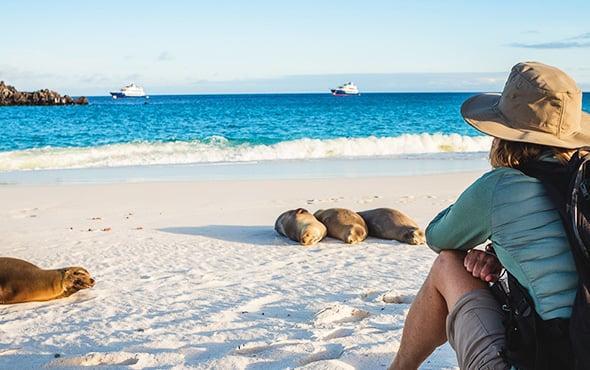
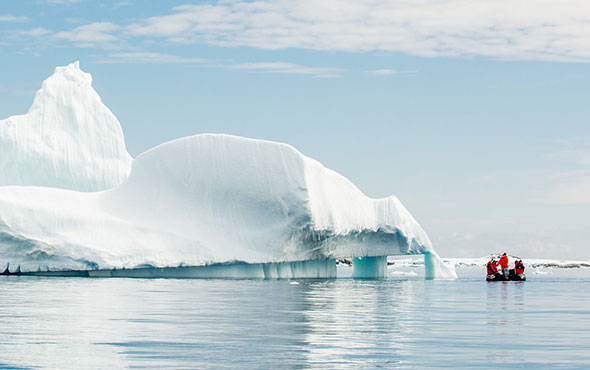
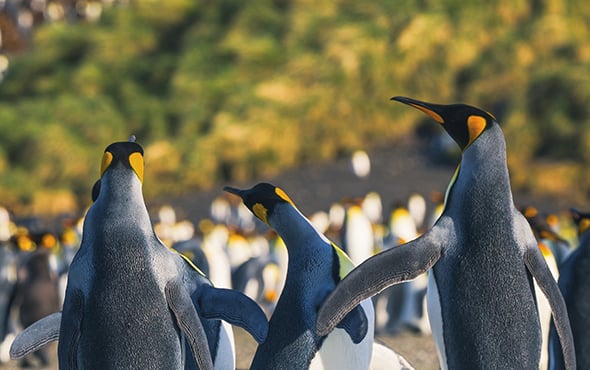

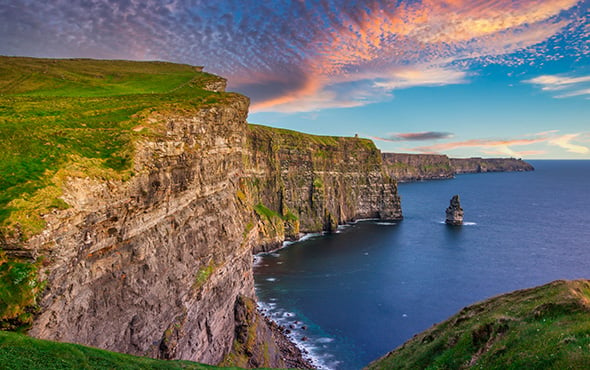
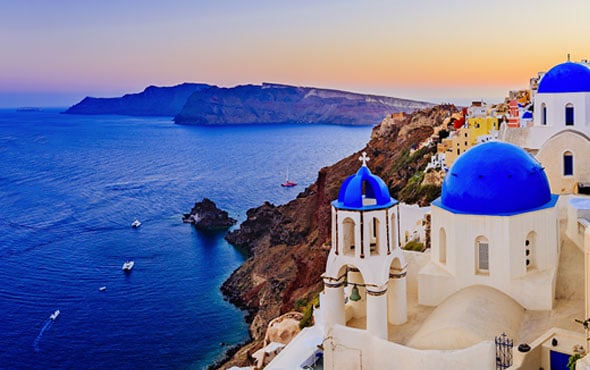


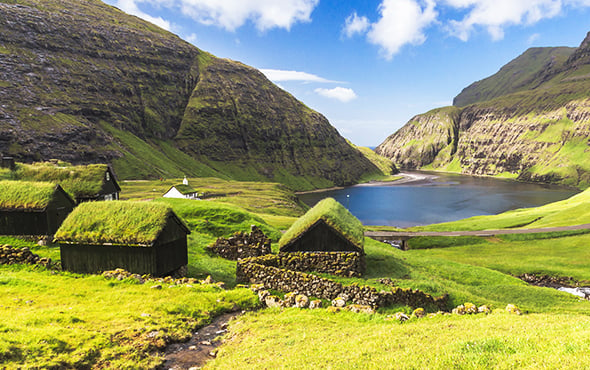
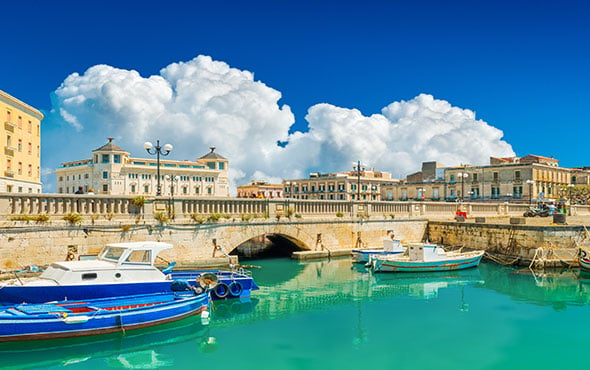


 The Americas
The Americas
 Europe, Middle East and Africa
Europe, Middle East and Africa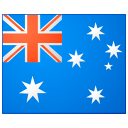 Australia, NZ and Asia
Australia, NZ and Asia